
A potentiometer wire AB as shown in 40 cm long of resistance 50Ω/m free end of an ideal galvanometer is touching the potentiometer wire with the help of a jockey. What should be the velocity of the jockey as a function of time so that potential difference across the galvanometer is varying with time as (2sinπt)V
(10πsinπt)cm/s
(10πcosπt)cm/s
(20πsinπt)cm/s
(20πcosπt)cm/s
Step by step video & image solution for A potentiometer wire AB as shown in 40 cm long of resistance 50Omega//m free end of an ideal galvanometer is touching the potentiometer wire with the help of a jockey. What should be the velocity of the jockey as a function of time so that potential difference across the galvanometer is varying with time as (2sinpit)V by Physics experts to help you in doubts & scoring excellent marks in Class 12 exams.
Updated on:21/07/2023Similar Questions
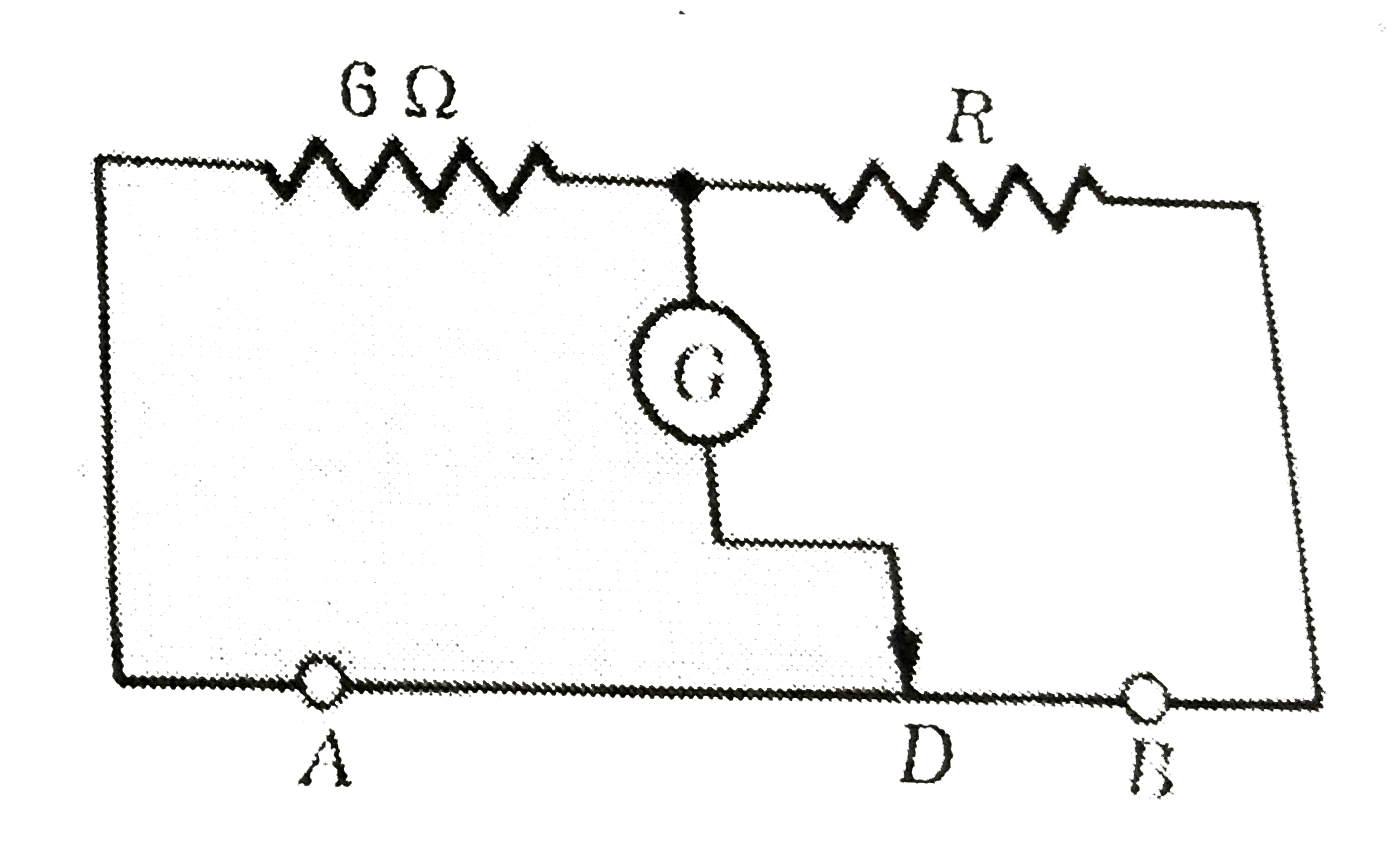
The potentiometer wire AB shown in figure. Is 50 cm long. When AD=30cm, no deflection occurs in the galvanometer. Find R
View SolutionThe potentiometer wire AB shown in figure is 40cm long. Where the free end of the galvanometer should be connected on AB so that the galvanometer may show zero deflection?
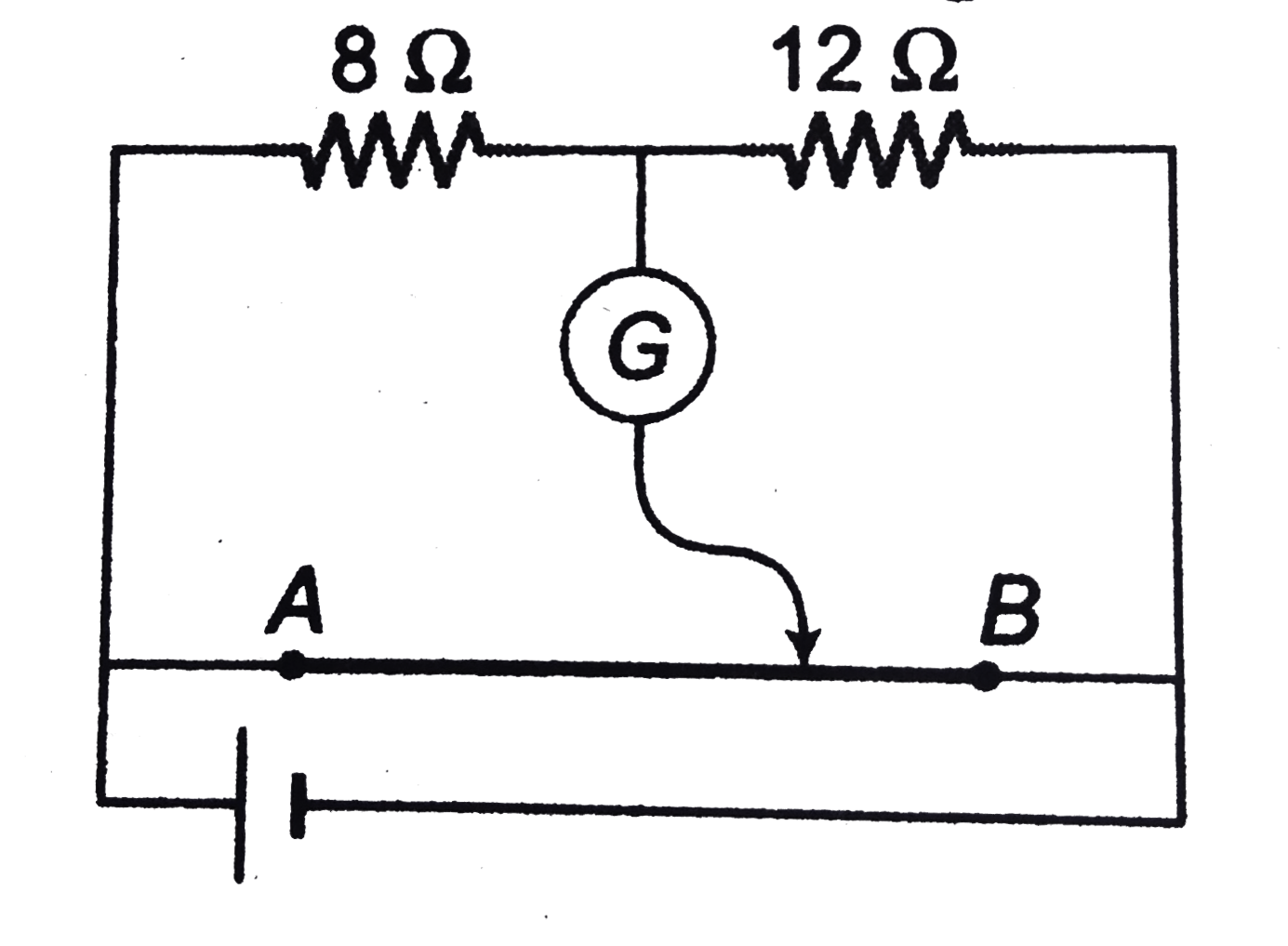
View Solution
Knowledge Check
A potentiometer wire of length 400 cm has a resistance of 8Ω. If a potential gradient of 0.5 V/m is maintained throughout the length of the wire, then the current flowing through the wire is
A0.5 AB0.25 AC1AD0.75 AA potentiometer consists of a wire of length 4 m and resistance 10Ω. It is connected to a cell of emf 2V.The potential gradient of the wire is
A0.5 V/mB2 V/mC5V/mD10V/m
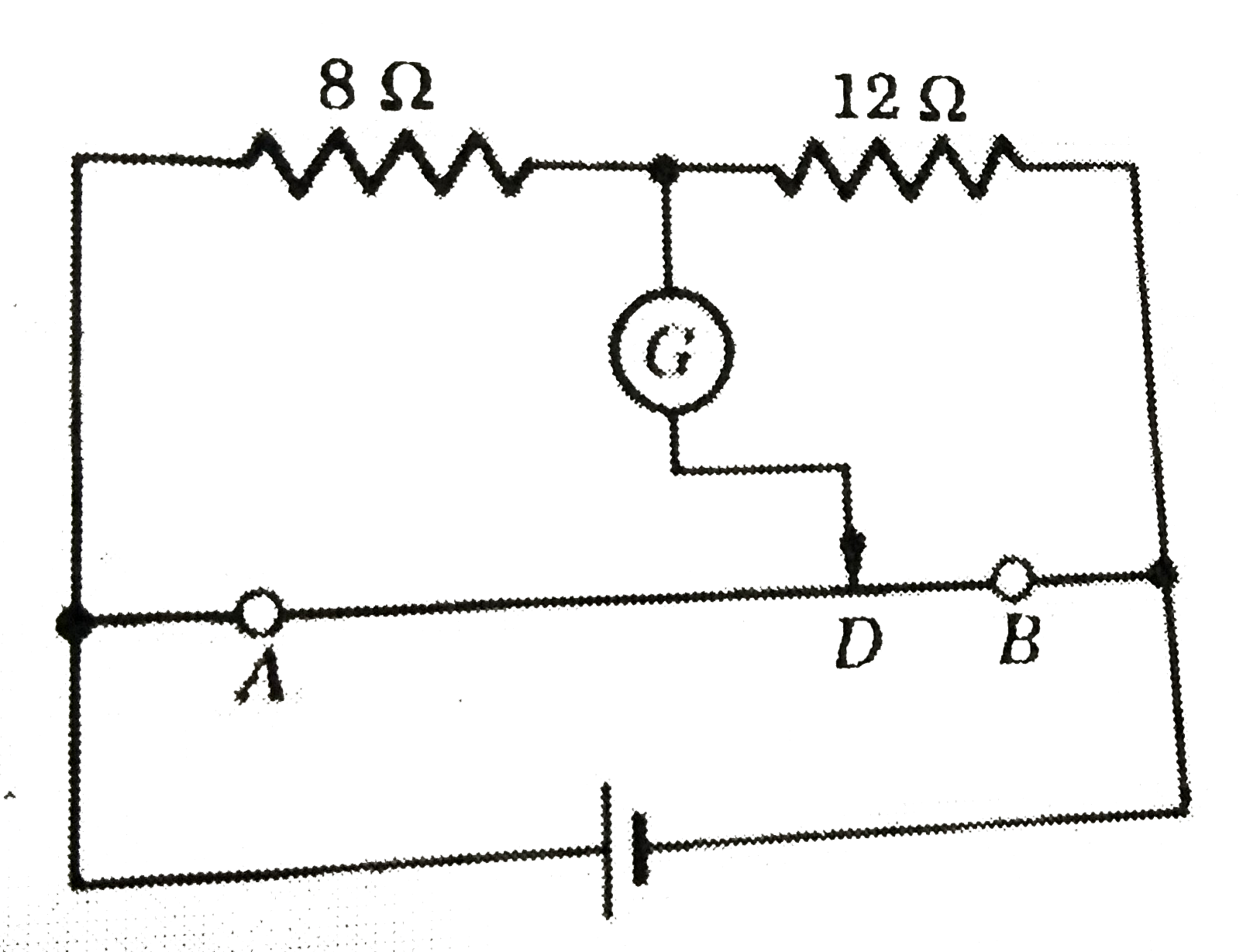
The potentiometer wire AB shown in figure. Is 40 cm long. Where should the free end of the galvanometer be connected on AB so that the galvanometer may show zero deflection?
View SolutionA potentiometer wire AB is 100cm long and has total resistance of 10Ω. If the galvanometer shows zero deflection at the position C, then find value of unknown resistance
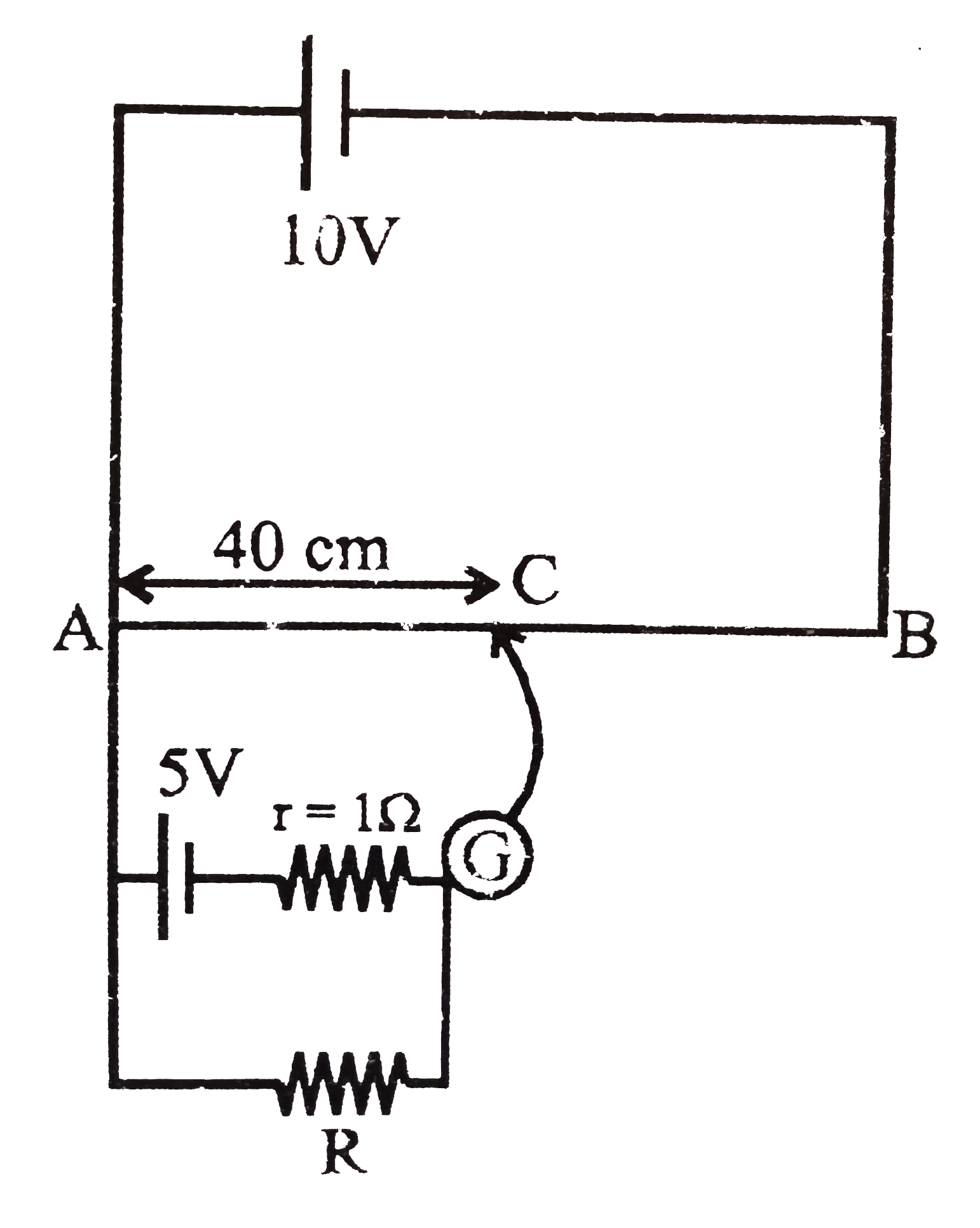
View SolutionThe potentiometer wire AB shown in figure is 40 cm long. Where should the free end of the galvanometer be connected on AB so that the galvanometer may show zero deflection?
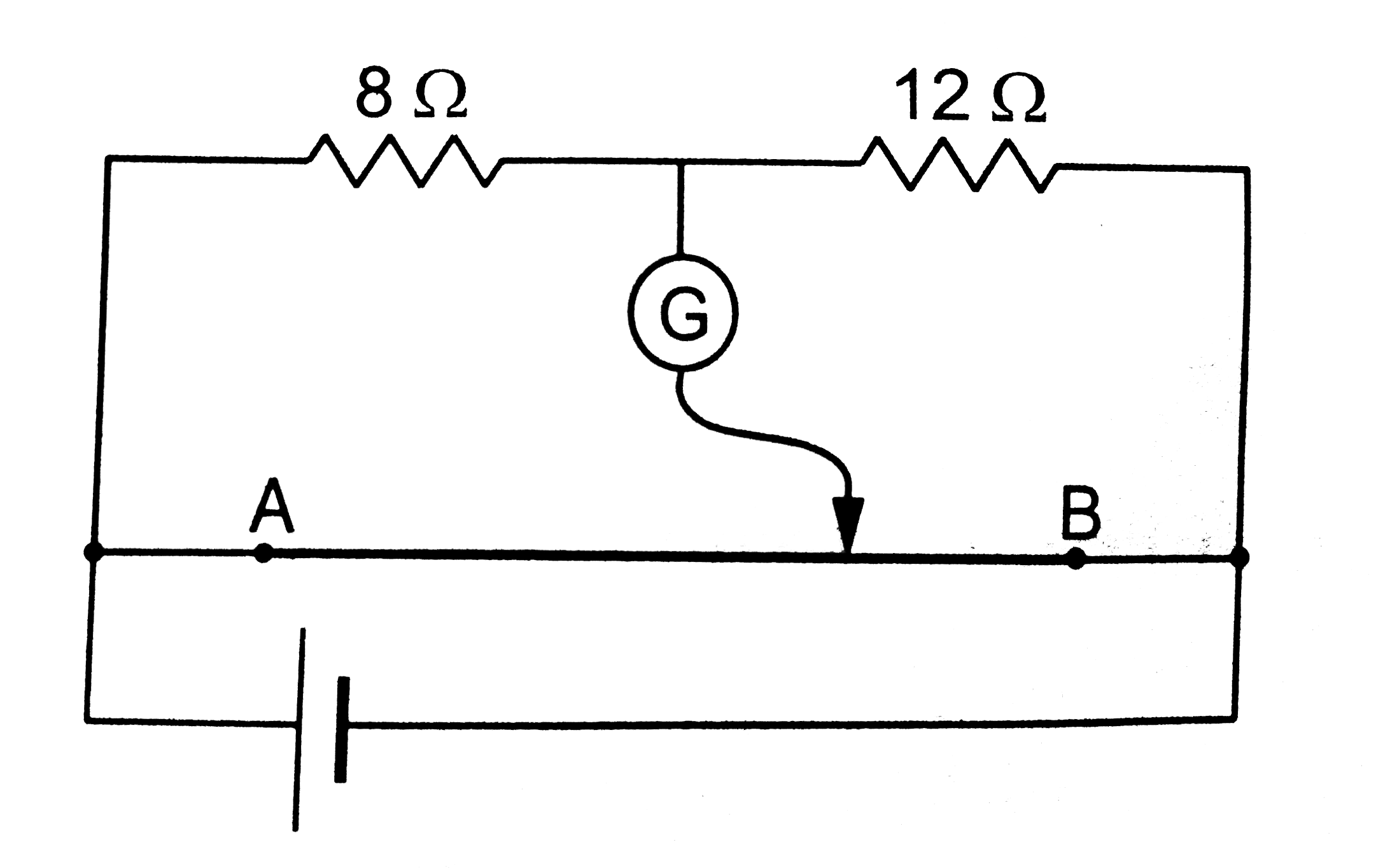
View SolutionA potentiometer wire of length 100 cm has a resistance of 10Ω. It is connected in series with a resistance R and cell of emf 2V and of of 40cm of the potentiometer wire. What is the value of R?
View SolutionThe potentiometer wire AB is 600cm long. At what distance (in cm) from A should the jockey J touch the wire to get zero deflection in the galvanometer?
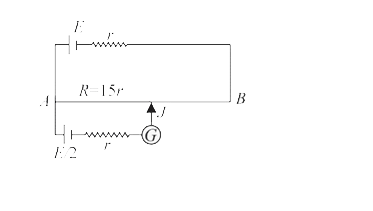
View SolutionA potentiometer consists of a wire of length 4 m and resistance 10Ω. If is connected of cell of emf 2V. The potential difference per unit length of the wire will be
View Solution
